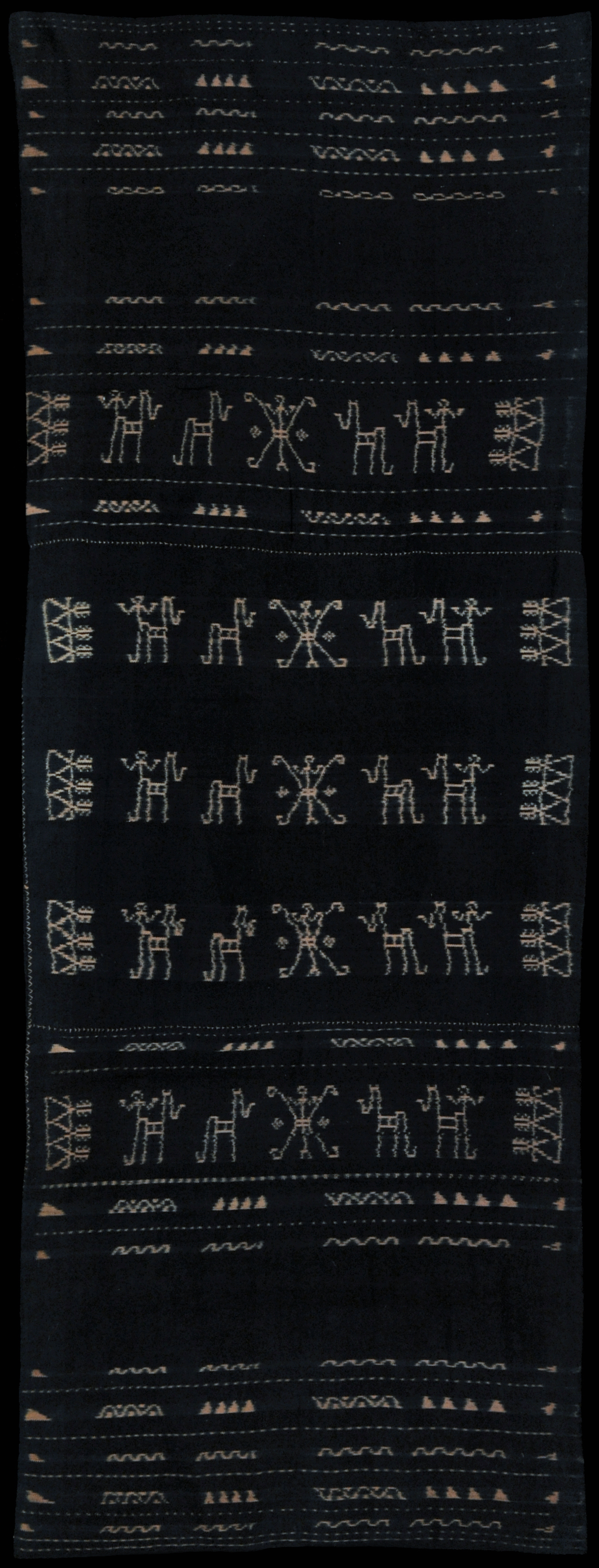| |
 mouse over to magnify mouse over to magnify
| | | | 076 Flores Group, Ngadha
Sapu jara (sarong)
| | Locale: | Also Ngada, or referred to by name of capital, Bajawa. | | Period: | Early 20th c. | | Panels: | 3 | | Design: | Sarong, called lawo keto jara or sapu jara (jara meaning 'horse'), for woman of high standing made of three panels decorated with white, angular horse riders and primitive imitations of patola inspired jilamprang and tumpal motifs on indigo background, and narrow bands with small geometrical patterns. | | Size: | 71 x 187 cm (27.9 x 73.6 in) | | Weight: | 670 g (252 g/m2) | | Yarn: | Cotton, hand-spun, fine | | Comment: | The lawo keto is a sarong for a woman of the highest caste, according to Hamilton worth a buffalo with horns the length of a man's arm. The naive stick-figure designs are a hallmark of this region. Very good weaving for Ngada / Bajawa standards. The motifs are much larger than is common for sarongs of this type. Very dark indigo tone, the result of extended seeping in the indigo dye. Fine hand spun throughout. | | Background: | Additional information in chapters on Flores Group and Ngadha. | | Published: |
Woven Languages, 2014.
Ikat Textiles of the Indonesian Archipelago, 2018.
| | Compare: | 116 | | Sources: | Very similar 19th C. sarong in Granucci, Art of the Lesser Sundas, Fig. 100. Very similar sarong in Yoshimoto, Ikat, Fig. 111. Very similar piece, though with somewhat less elaborate patterns, in Gisela Voelger c.s. Indonesian Textiles, Supplement by Khan Majlis, Fig. 125. Similar to sarong in Fowler Museum, Object ID UCLA FMCH X92.354, depicted in Roy Hamilton, Gift of the Cotton Maiden, Fig. 5-5. Motifs also similar to sarong in Khan Majlis, Woven Messages, Fig. 161. | | |
 ©Peter ten Hoopen, 2025
All rights reserved.
|
|


